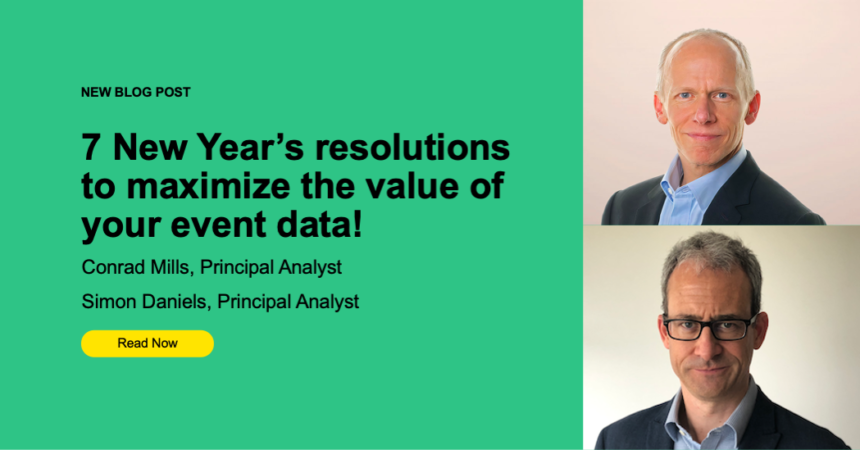In the first of our two-part series looking at the way in which B2B events represent an underutilized yet invaluable source of audience data, we discussed the value that event data represents to marketers. Now in part two, let’s take a closer look at how to operationalise this data to make sure it’s being fully and effectively leveraged. There are three principal challenges here: events teams making event technology decisions being in isolation, a lack of centralized event oversight, and event data sitting outside of standard processes. How can this be avoided?
Maximizing the value of event data
Events teams must partner with revenue operations from the outset in seven ways to address these challenges:
- Event technology selection. Maximize the value of event data by involving revenue operations early on, sharing objectives and insights, and selecting the right technology solution in conjunction with relevant stakeholders. Rushing decisions leads to diminished outcomes.
- Solution deployment and integration. Following technology selection, RevOps is responsible for its deployment. Consider the full range of data-capture technologies, prioritizing owned technology for booth engagement to ensure seamless integration and avoid unnecessary technology proliferation.
- Owned event data capture and processing. Use properly integrated platforms to manage owned events and systematically capture event registrations, attendance, and engagement data, avoiding manual processes. Take a systematic approach to registration capture even for events where using a full event management platform doesn’t make sense.
- Third-party event data processing. Connect RevOps with third-party event producers to agree on data details, privacy compliance, and secure data delivery. Involve legal counsel if necessary to approve privacy terms and ensure compliance with regulations.
- Data unification and storage. Pass captured event data to marketing automation or CRM systems, making it visible across the revenue ecosystem, and consider integrating it into existing enterprise repositories for powerful insights and a cohesive customer experience.
- Data analysis and activation. Incorporate event data into analytics to improve real-time event experiences, future events, and follow-up activities. Event engagement is also a powerful signal for buying group Finally, leverage event insights for personalized marketing and product development strategies.
- Data maintenance. Proactively manage the lifecycle of event data by incorporating it into the existing data landscape, ensuring it is kept accurate, complete, and free of duplicates. Establish data retention policies to ensure compliance with regulations and carefully consider the suitability of different data management platforms for certain data, such as at-event wearable data streams.
The role of RevOps in events data
While responsibility for utilizing event data lies with events teams themselves, RevOps must take responsibility for providing appropriate support to make this happen. Don’t wait to be asked and ensure the entire organization enjoys an events data-driven Happy New Year!








